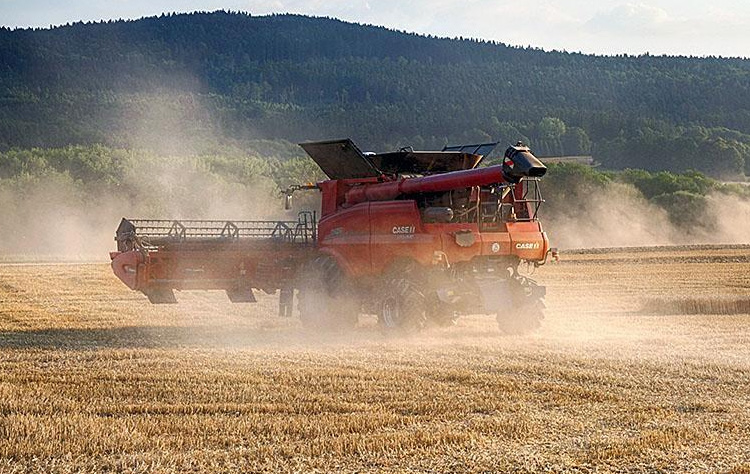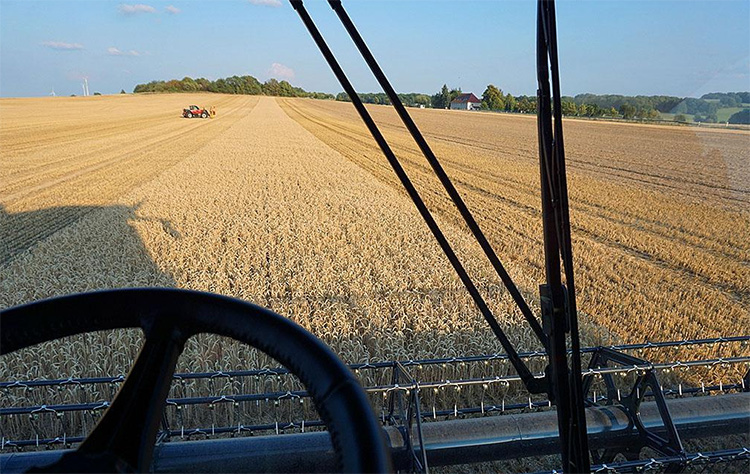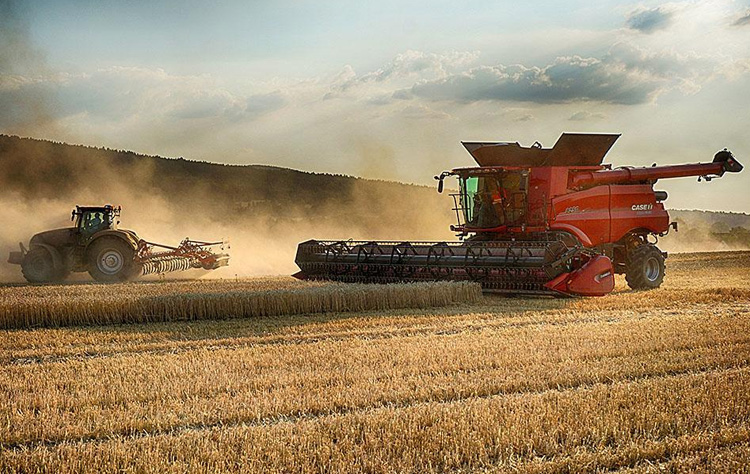-
AGRICULTURAL MACHINERY
- BRANDS
- Tractors CASE IH
- Grain-harvesting combines
-
Sowing machinery
- KUHN Planter 3 Select precision seed drill
- Sowing complex KUHN ESPRO _ RC
- Precision seeder KUHN KOSMA
- Case IH SDX 30/40 pneumatic sowing machine
- BEDNAR OMEGA OO_FL sowing machine
- A wide seed drill BEDNAR EFECTA CE
- Grain seeder BEDNAR CORSA CN
- Pneumatic precision seed drill KUHN MAXIMA 3 TRM E
- MATADOR MO sowing machine
- Sprayers
- Tillage machinery
-
Harvesting machinery
- Olimac Drago 2 corn harvester
- Olimac Drago GT corn harvester
- Olimac Gold sunflower harvester
- Franco Fabril SF sunflower harvester
- Case IH 3020 TeraFlex
- Case IH Grain harvesters
- Case IH 3050 Varicut
- MacDon FD2 corn harvesters
- Grain reaper Case IH 2030
- Case IH 4408 corn harvester
- Case IH 4412 corn harvester
- PW8 Pick-up Header
- Corn harvester FRANCO FABRIL MH870
- Mower
- Balers
- Rollers
- Telescopic loader
- USED Machinery
- SAFEGUARD WARRANTY
-
PRECISION AGRICULTURE
- AgroDrones & UAV
-
Tractor solutions
- Raven CR7 Field Computer
- XCN - 2050 display
- Дисплей XCN-1050
- XCN-750 display
- Autopilot Electric Motor Drive automatic driving system
- Automatic driving system EZ-Pilot Pro
- AFS AccuGuide precision farming system
- Automatic water system Sveaverken F100
- Raven hydraulic autopilot for unprepared equipment
- Trimble Autopilot automatic control system
- Sprayer solutions
- Combine solutions
- Trailed implements solutions
- Correction service
- Maintenance of data
- USED MACHINERY
- SERVICE
- PARTS
- WORK AT TITAN
- SPECIAL OFFERS
What helps Axial-Flow 250 combines reach maximum result?
08/13/2018
In 2019, new models of CASE IH Axial-Flow 250 series combines will replace the 240 line. The new line includes three models: Axial-Flow 7250, 8250 and 9250 with power of 498 to 634 hp.
We have already talked about the improvements that have affected the tilted chamber as well as unloading, spreading and other systems. But in this article we will focus at electronic systems, and, in particular, we’ll talk about the “electronic heart” of the combine – innovative automation system of AFS Harvest Command. AFS Harvest Command is a whole package of technologies that allows the operator to achieve maximum results by changing only a few settings according to the type of culture and conditions of collection.
The system itself, based on 16 sensors, monitors the machine and automatically adjusts the operation of the combine to achieve maximum productivity with minimal operator intervention. AFS Harvest Command is controlled by the AFS Pro700 terminal from the combine cab; it is able to work with crops such as wheat, rapeseed, corn and soybeans (the list of crops is expected to expand in the near future).
After selecting the Basic tab on the AFS Pro 700 screen, the operator enters the type of culture, the desired result (strategy), the maximum travel speed and the maximum load on the engine. After that the system starts and the harvesting begins.
If the operator believes this is insufficient then detailed configuration can be done via the “Advanced” tab. It allows you to change the basic parameters of work, set the frequency of automatic adjustments and take into account the ease of threshing.
“The AFS Harvest Command automation system is not intended to replace the operator’s decisions, but to improve them by identifying factors that limit the performance of the combine when changing operating conditions, reflecting these factors and making appropriate changes to compensate for them”, said August von Eckardstein, Marketing Manager of Case IH harvesting equipment in Europe, the Middle East and Africa.
Therefore, the basic version of AFS Harvest Command includes a proven system of Automatic Crop Settings (ACS) which adjusts the fan speed and clearance under the drum according to the type of culture. This eliminates the need to make separate settings for each item. The operator has the ability to configure travelling combine and even save these settings for the future use. The next version of AFS Harvest Command has an updated Feedrate Control system in its assets; this system regulates the speed based on the amount of incoming culture. The operator sets the maximum load on the engine and travel speed, and Feedrate Control brings the equipment to these performance indicators and at the same time adjusts them to take into account the optimal feed rate for a particular crop and its condition.
In this case, Feedrate Control (which can be used as a standalone function) is able to work with all types of crops.
The most complete option is complete AFS Harvest Command automation which automatically makes changes to the parameters of the threshing and contaminants removal systems and includes a Feedrate Control system; moreover, it has additional functions for monitoring grain quality. Control systems and sieve pressure sensors are used for the operation of the systems; this facilitates further the process of automatic adjustment of the machinery systems in order to reduce amount of contaminants and maintain high grain quality. In order to determine more accurately presence of any broken grain and contaminants the camera uses patented multispectral light radiation in the visible and invisible ranges.
This patented technology helps the grain control chamber to monitor more accurately quality of grain samples by illuminating them in the ultraviolet, blue, green, red and infrared ranges. Combination of five light spectra allows significant increasing of the efficiency of detecting traces of starch on broken grains. AFS Pro 700 terminal warns the operator if the camera’s visibility is reduced due to contamination of its lens.
As a result, the operator only needs to choose one of the four modes (strategies) of the combine and focus on other issues. Everything else (including automatic driving) will be fulfilled by electronics for him, in particular:
1. Productivity mode: the combine operates at a speed that provides an acceptable level of grain loss in the rotor and contaminants removal system.
2. Fixed delivery capacity mode: the combine maintains the set delivery capacity by changing the speed and adjusts the settings to minimize losses.
3. Maximum delivery capacity mode: the combine operates at the maximum speed or power set by the operator, while adjusting the settings of the combine to minimize grain losses in the rotor and contaminants removal system.
4. Grain quality mode: the combine adjusts the settings to maintain the set grain quality and its purity level while minimizing losses.
Using AFS Harvest Command, experienced operators will be able to improve further their productivity and improve grain quality, and inexperienced operators will be able to achieve quickly productivity compared to that gained by experienced operators. AFS Harvest Command will allow to both groups to worry less about factors such as grain loss, fan speed and rotor speed which will enable them to focus more on the harvester position and unloading.



INDUSTRIES
BRANDS


